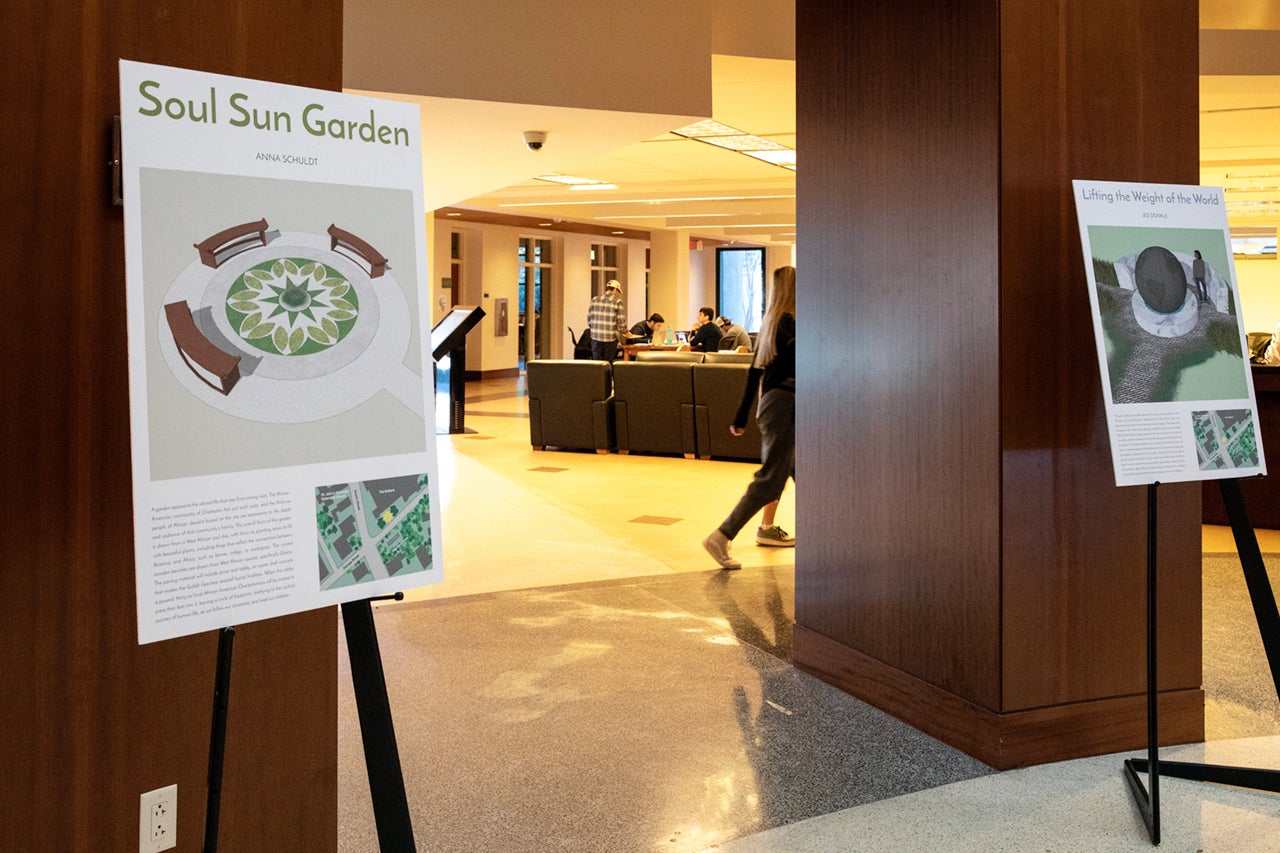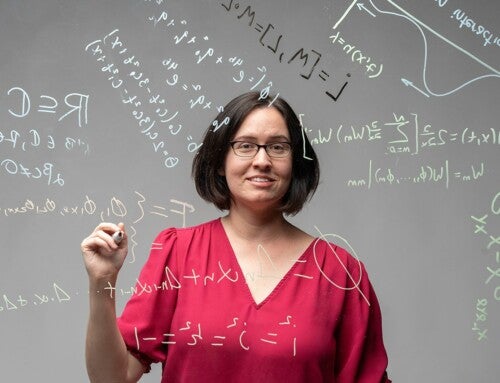It was not what the excavation crews expected to find during their renovations of the Gaillard Center in 2013.
The discovery of the human remains of 36 individuals of African descent who were buried near Anson Street in the late 1700s posed significant challenges for City of Charleston officials and residents alike.
How and where should these remains be reinterred? What, if any, memorial should tell their story and its place within the Holy City’s 300-plus-year history? What constitutes a respectful and engaging commemoration of these two infants, four children, 16 men, 10 women and four other undetermined people?
College of Charleston faculty and students, however, spotted an opportunity amidst the myriad challenges.

The exhibit “Rise that We May Feel Your Light” will be on display through Feb. 28, 2019. (Photos by Heather Moran)
As part of a public conversation about the best ways to honor these individuals, students of professor Nathaniel Walker’s “Architecture of Memory” course have created several proposals for a new memorial near the burial site in downtown Charleston. Their renderings and the accompanying artistic statements are part of an exhibit titled “Rise that We May Feel Your Light” currently on display in the Addlestone Library Rotunda through Feb. 28, 2019.
Consisting of 12 panels, the exhibition’s proposals were created as part of students’ research of monumental and sacred design traditions from around the world, in particular West Africa. Proposed designs run the gamut from traditional bronze sculpture to intimate plazas with digital drum pads and pavilions supported by columns bedecked in gold mosaic. The diversity in designs is the result of students’ varied inspirations, spanning the obelisks of Egypt and Ethiopia, Senegalese stone circles, African metallurgy, and the foodstuffs and flora associated with the South Carolina Lowcountry.
A fundamental belief threads through each of the proposals: The place of rest of these individuals is a point of tangible connection between the past and the present, between America and Africa. It is a sacred space.
“These 36 deceased pioneers, men and women, young and old, are veritable martyrs of endurance and courage, and they deserve to be honored, while living Charlestonians deserve to be provided with a suitable place for dignified commemoration and enlightening education,” says Walker, assistant professor of architectural history. “We must build a monument – a visual representation and celebration of the bridge between Charleston and Africa, and between the present and the past, that this site provides.”
Joanna Gilmore, adjunct professor of sociology, adds, “Even if none of the student designs inform the design of the memorial for the reinterment site, this exhibition provides a forum for discussion – within the College and the broader community – about the memorial landscape in Charleston, what and whom we remember and honor.”
The exhibition is part of a multiyear collaboration between the Gullah Society, the College and community partners. A testament to the power and pertinence of their work is found in the support it’s garnered.
The tireless persistence of the Gullah Society’s Ajani Ofunniyin, adjunct professor of anthropology, African American Studies, and Women’s and Gender Studies, resulted in the commitment of Charleston Mayor John Tecklenburg’s office to reinter the remains in a dignified and respectful manner. The National Geographic Society is currently funding DNA testing of the 36 individuals as well as those of African-Americans living in Charleston today to discover possible familial connections. Arts workshops and school learning programs, created with Gullah artists and educators, are slated for next spring as the city prepares for a reinterment ceremony in May 2019.
“Not only is this site significant and unique in Charleston, it also represents an opportunity to recognize the burials of other people of African descent that have been lost to the vagaries of the historical record and urban development,” Gilmore says. “African-Americans built this city, and here we have found the resting places of 36 people who knew that truth firsthand.”






